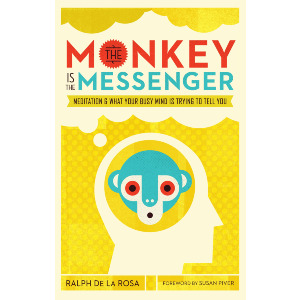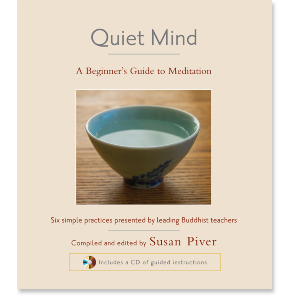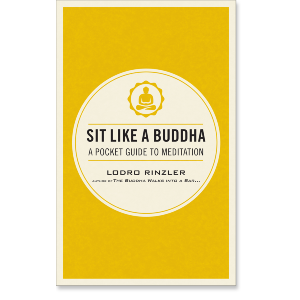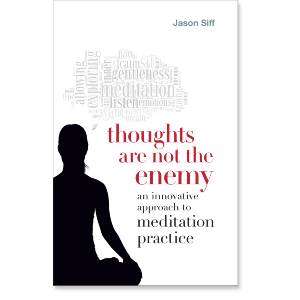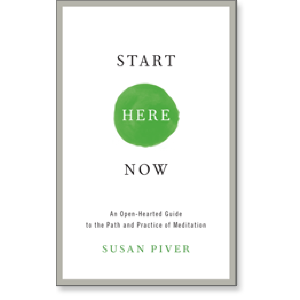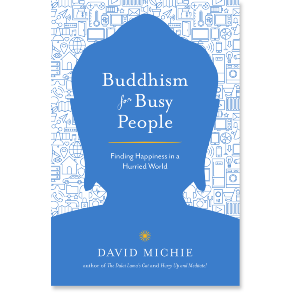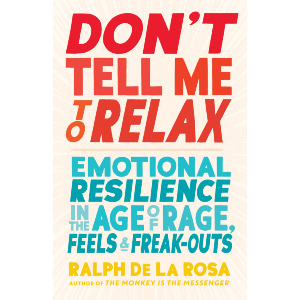The Breath as a Resource
"There is no need to struggle to be free; the absence of struggle is in itself freedom."
—Chögyam Trungpa Rinpoche
The breath is a most precious resource that we routinely ignore. Simply put: no breath, no body, no you. Although the body can go for days without food and water, if you deprive your body of breath for longer than one minute, you will begin to live a very different version of reality. It’s common knowledge that in the Eastern traditions the breath is intimately linked with spirit, prana, the vital force behind our being. In the creation myth of Genesis, God breathes life into Adam, after forming his body out of the earth. For us, the breath is the nexus between mind and body, the place where psyche and soma intertwine. How we are breathing has everything to do with our physical and mental states. And yet, how in touch with our breath are we, in the tussle of our lives?
On the physical plane, breathing stimulates the circulatory system, which delivers needed oxygen and nutrients (via plasma) to our cells. Breathing literally nourishes our entire system. We might spend quite a bit of money putting all the clean foods, supplements, and green juices imaginable into our bodies, but if we’re not breathing well, they won’t do us much good. It’s like buying something online and never arranging for it to be shipped.
Oxygen is also both a stimulant and a relaxant: it wakes us up and puts us at ease at the same time. This is the story of meditation in a nutshell: we are here to do the work of mindfulness and to relax and let go at the same time. Oxygen is the only known substance that can do either of these things with no adverse side effects.1
How you breathe is how you feel. Consider for a moment that crying is a form of breathing. Conversely, laughing is a form of breathing. Shortness of breath is symptomatic of a panic attack. Colloquially, relaxation is synonymous with “breathing easy.” These are examples of how our breathing reflects our state of mind. In other words, the stimulus comes before the emotion, which leads to a particular breathing pattern: for example, something absurd happened, you found it funny, and the breathing pattern of laughing began. But we can make it work the other way around, too. We can breathe purposefully to induce states of mind.
In an interesting set of studies, European psychologists Pierre Philippot and Sylvie Blairy confirmed that joy, anger, sadness, and fear each correlate with a specific breathing pattern. They then conducted another study wherein different participants were instructed to follow the breathing patterns identified in the first study to see if they would begin experiencing the same, correlated emotions as the participants from the first. The participants in the second study were indeed able to induce joy, anger, and sadness just by breathing in a particular way (fear was a bit trickier, however). We can think of it this way: whenever we are unaware of our breath, it is reflecting our state of mind and our state of mind is being influenced by unconscious breathing patterns, possibly leading us unintentionally to negative mind states. When we are aware of our breath, we gain the power to collaborate with it in order to affect our state of being.2
Whenever we are unaware of our breath, it is reflecting our state of mind and our state of mind is being influenced by unconscious breathing patterns . . .
The breath is the most significant bodily function that has the option of being either involuntary or voluntary. Just as the breath is the nexus between mind and body, it is also the bridge between our voluntary and autonomic nervous systems. Given that many diseases of mind and body have been shown to result from underlying distorted patterns in the autonomic nervous system, it is a boon to us that we can rewire our autonomic system with the voluntary one. That is, the more we can introduce healthy and balanced nervous system states through proper breathing, the more likely those temporary states are to become enduring traits.3
We need two wings to fly. With regard to the breath’s role in meditation, we’ve already discussed the first wing: allowing the breath to find its natural rhythm. We are about to explore the second wing, which is knowing how to engage the breath with appropriate deliberation. These two can work together to influence the nervous system.
After the next section I’ll suggest and elaborate on three breathwork practices so that you can have a repertoire: one for relaxation, one to bring energy, and one for balancing. Forever and always, we want to seek balance in our practice. If we are too heavily on one side of a spectrum, we always want to calibrate toward the other end. Simply put, if we are sleepy, energizing breathwork is best. If we are anxious or jittery, we can employ relaxing breathwork. If we aren’t leaning too far on either side of that spectrum, we can employ balancing breathwork. As the saying goes in Ayurvedic medicine, “Opposites are medicine.”
How You Breathe Is How You Once Felt
I recently had a direct experience of the psychological nature of the breath. This anecdote will also serve as a primer for our next chapter, where we will discuss model scenes: what they are, how they come to be stored in our bodies, and how they show up as repetitive patterns in our lives. What follows is an example of a model scene that showed up in my breathing habits and unlocked a world of insight and healing for me when I was able to stay with it.
I experience burnout, or what’s often called “vicarious trauma,” in my work more than any other helping professional I know. The nature of my work simply doesn’t mix so well with my nervous system, which has been rendered a bit threadbare by years of emotional turmoil and substance abuse. Today, when I push my limits too hard or say “yes” to too many commitments, I invariably pay the price of a certain ache in my bones, a mental fog, irritability, a loss of empathetic connection, and diminished stamina for activity. I resented burnout for being such a frequent visitor after it first started coming around, but thanks to the growth mindset, burnout has become one of my biggest teachers. I am someone with a predilection for intensity and a terrible feel for my own boundaries, but now burnout has stepped in to keep me in check. It’s painful and inconvenient, but I doubt my body could get my attention otherwise.
I was in the Bay Area for some teaching gigs when burnout stopped me dead in my tracks. I came to town several days early, hoping to catch up with some old friends, and of course I had worked myself to the bone in the days leading up to my departure from New York. Within a day of arriving in California, my system tanked and I found myself in a pit of exhaustion. I ended up spending the next three days alone, incapable of much more than long periods of supine meditation and breathwork. I had to put myself in what my friend and holistic beauty guru, Britta Plug refers to as “health jail.”
On my third day of incarceration, in my third hour of lying on the ground, feeling into the minutia of my breath and body, insight hit. I noticed for the first time that at the onset of each inhale I took, despite my intention to allow it to be natural, there was a nanosecond where I sort of yanked at the breath. A micro-moment of rushing, of impatience, of wanting to just get to it already. I started to feel in a new way how I tensed my jaw and my shoulders to pull in breath as opposed to expanding my torso and diaphragm. I could also feel how there was a slight spike of adrenaline that came with this activity. Suddenly I couldn’t not feel the jagged activation this was causing in my body. My unconscious habits around breathing were putting me on the same mini emotional roller coaster that our phones do when they buzz in our pockets.
I got up and walked into the kitchen where I picked up a plate with that identical sharpness and sense of rushing. Whoa. I opened the refrigerator door with the same jolt. Double whoa. I reached for a container of leftovers with the same adrenal edge. Good god. Really? I put the leftovers in a pan . . . same thing. Then I remembered that my ex- girlfriend Sam had once commented on this odd, dysrhythmic way I have of moving about, saying she found it endearing.
The same habit present in my breathing was also reflected in literally every move I made with my body. No wonder my nervous system was in the gutter. I was asleep to the unnecessary and taxing jagged edge with which I approached just about everything. As my day progressed I became watchful of this. I slowed myself down, trying to ease into my various movements around the apartment. Then the insight deepened in a way I could have never anticipated.
I was in a yoga class later that afternoon, attempting to maintain these slow and steady movements and smooth breathing, when a buried memory emerged. When I was five or six years old, I would spend my summer days at a babysitter’s house with a few other kids. I used to eat very slowly as a kid, and this routinely drew comments from adults. But this babysitter wasn’t having it. Every day she’d find me still making my way through my lunch while the other kids had finished and were out playing. The babysitter, most likely dying for a break, began making fun of me for this, but to no avail. Eventually she began leaving me in the kitchen and turning off the lights behind her, leaving me alone and eating in the dark. After some days of this, humiliation set in and I began rushing through my lunch like everyone else.
No wonder my nervous system was in the gutter. I was asleep to the unnecessary and taxing jagged edge with which I approached just about everything.
The shame had left an imprint on me. Why else would this seemingly random memory—long forgotten and yet so very connected to my present experience—emerge now? Because I was young when this habit of rushing began, it was like the color of my own eyes: I couldn’t see it. Nevertheless, it was there—right there in my breath, in my body, in my autonomic nervous system—the whole time. My body was waiting for me to notice, and was delivering to me the gift of an aching exhaustion to point me in its direction.
In fact, the only reason pain and difficulty exists in our lives is to draw our attention to something that needs it.
Once, in the discussion period of a class, an attendee shared his experience of being able to relax his body at first, only to find that almost immediately his body would tense back up involuntarily. His impression was that maybe he just couldn’t do the practice, that there was something wrong with him, and he wanted to know if he should try a different form of meditation. I reflected his comment back to him in a more general way. I said something along the lines of, “I heard you that you’re able to relax, but maybe it feels a little bit like you’re losing control when you do, which is scary, so you tense back up.” He agreed that this described his experience. I suggested to him that I might be describing a pattern that plays out in his work and relationships, that I wondered if he felt driven by a need to stay in control and whether he got anxious anytime that grip loosened. The look on his face registered the correlation as he agreed a second time. He also agreed that this was the source of some problems in his life. I invited him to view the practice of embodied meditation as a safe place where he could work on this problem.
This man gained a very personal insight from his experience, but we can also tease out of it another, more universal insight: when we learn how to relax in our bodies, we learn how to open up and allow the natural flow of life to course through us. Maybe that’s scary, but I find the only alternative—living a life based on reactive fear and endless bodily tension—to be terrifying.
Calming Breathwork: 4-8-12 Breathing
The body responds positively to rhythm and repetition. One example of this is the universal inspiration to dance to music. Another example, which is perhaps more germane to our work here, is the way we instinctively rock and sing to babies in order to calm them down. When we introduce rhythm and repetition to the nervous system, it induces the relaxation response (discussed in chapter 3).4
4-8-12 Breathing can be practiced sitting up or lying down, and it is an excellent method for calming our system. It entails inhaling through the nose for a count of four, holding the breath for a count of eight, and exhaling through the mouth for a count of twelve. You’ll probably find that the exhale is finished before the count of twelve is up; simply keep acting as if the breath is still going out, enjoying the space between breaths (just as with the natural breath). It doesn’t matter how slow or fast you count, just that you keep as steady a rhythm as possible. In this breathwork, we are holding the breath to allow for maximum oxygen absorption. We are also allowing the exhale to be three times as long as the inhale, which is going to slow the heart rate down and downregulate the nervous system as well. This is an excellent practice to know and use if you suffer from anxiety or panic attacks.
On Using Breathwork to Address Anxiety and Panic Attacks
If you are intending to use this as a breathing exercise at the onset of a panic attack, please note that a lot of mistakes are commonly made. First of all, in order for any breathing exercise to be useful to us in such a moment, we have to practice it regularly when we’re not in a state of panic. If you don’t practice, and then you try to introduce this technique during a panic attack, your mind’s going to say, “Oh, really? You think some deep breaths are going to do us any good?” It will feel pointless, and you won’t use it long enough for it to have an effect. Also, all breathwork practices have a cumulative effect on our system over time. Again, our nervous system loves familiarity, so the more regularly we practice whatever breathwork it is, the more impact it will have.
Also, start the breathing practice the moment you feel anxiety coming on. If you catch the onset of an attack quickly and meet it in a friendly way with skillful breath, you stand a good chance of heading it off at the pass. If you start this breathing after you’re in a full-blown attack, probably the best you can hope for is that it will help manage it.
Finally, neuroscience estimates that, for any breathwork to meaningfully downregulate your system, your breath needs to be slower than six cycles per minute (i.e., longer than five seconds per inhale and per exhale). This needs to be maintained for two and a half minutes or longer (a little less than the length of a pop song) in order to take effect.
Energizing Breathwork: The Twelvefold Belly Breath
The Twelvefold Belly Breath is excellent for breaking up stagnant energies in the body and creating a sense of energized clarity. It can be practiced sitting up or lying down. I picked this one up through my studies with Dharma Ocean, but reportedly it is a qi gong practice for clearing the lungs. It literally squeezes stale blood out of the organs and allows for fresh blood and resources to be absorbed. It pulls the diaphragm closer to the spine on the outbreath, which is associated with the release of vital energy in yoga, and it encourages full inhalations, which the body loves. Practiced multiple times in succession, it will also break up anything that is stuck in the digestive organs, which has a refreshing effect on mind and body. Energetically speaking, we are clearing out the rust and accumulated debris of past experience and clearing space for fresh vital energy to arise in the subtle body. Another way of saying this is, it gets you high.
To do this practice, there’ll be some anatomical talk (unfortunately something we shroud in shame in our society). The inhale is a full breath taken into the lowest part of the belly, between the navel and the pubic bone; the exhale is similarly thorough and is where the magic lies. In order to squeeze as much stale air out as possible, we’ll pull the navel toward the spine and engage the pelvic floor on the exhale. That is, squeeze in the anal sphincter, pull the perineum (the region about one inch in front of the anus) up and into the body as you pull the belly in. This engagement will take some practice at first to really get, but the payoff is more than worth it. As you breathe in again, the entire system is invited to relax and the breath lands in the low belly, and with the exhale you engage the lower pelvis and the belly again. Do this breath for a total of twelve times. You can repeat this cycle of twelve breaths two or three times if you wish.
Although this practice is fairly vigorous, we want to breathe without creating any strain. This will take some trial and error. Do watch for habitual tensing, especially in the neck, shoulders, and jaw, where we tend to pull the breath from instead of allowing the diaphragm to draw it in. Relax these areas if you notice you are gripping. Full breath does not mean labored breath.
Breathwork for Balance: The Ninefold Purification
If you are neither sleepy nor anxious, this is your go-to breathwork. You may know this one as “alternate nostril breathing,” or nadi shodhana for you yogis out there. There are many variations on this traditional practice—I’ll give you the most simplified version I know of. It entails a total of nine deliberate breaths with some short breaks in between. This technique is practiced sitting up.
Take your left index finger and bring it to the outside of the left nostril without closing it off. Take a comfortably full inhale through both nostrils. Close the left nostril with your finger and exhale smoothly through the right nostril. Add a short, staccato push at the tail end of the outbreath by quickly moving your belly inward. Repeat this process three times total.
Let your hand relax on your lap and take a natural breath. You will be able to feel a subtle shift on the right side of your body.
Now we’ll switch sides. Bring your right index finger to the outside of your right nostril, inhale through both nostrils, close off the right nostril, exhale out of the left side with a short push at the tail end. Repeat a total of three times.
Let your hand relax after you complete three cycles. Take one easy breath and notice any shift in sensation on your left side.
I want to remind you that we are not here to make an enemy of anything or anyone in our practice. We are here on a mission of supreme friendliness, not as an angry landlord evicting unwelcome squatters.
Next, do three breaths in the exact same manner but with both nostrils unobstructed. Breathe in through both nostrils, then breathe out through both nostrils, adding the slight push at the end. Simply relax when you are done, and allow the benefits to arise in the body.
With all breathwork practices it is helpful to have a sense of stale, stagnant energy leaving the body on the exhale and fresh energy entering on the inhale. You also are welcome to imagine warm light entering your body on the inhale and dark smoke leaving the body on the exhale. That said, I want to remind you that we are not here to make an enemy of anything or anyone in our practice. We are here on a mission of supreme friendliness, not as an angry landlord evicting unwelcome squatters. We are simply assisting any energies that wish to depart in doing so, and filling that space in with something that will support our whole system in the meantime.
Notes
1. Andrew Weil, Breathing: The Master Key to Self- Healing (Boulder: Sounds True, 2001).
2. Pierre Philippot and Sylvie Blairy, “Respiratory Feedback in the Gen-eration of Emotion,” Cognition and Emotion 16, no. 5 (2010): 605–27.
3. Weil, Breathing.
4. Herbert Benson, Relaxation Revolution: The Science and Genetics of Mind Body Healing (New York: Scribner, 2011), 54–70.
Share
Related Books
$16.95 - Paperback
$14.00 - Hardcover
$11.95 - Paperback
$16.95 - Paperback
$14.95 - Paperback
$19.95 - Paperback

Visit Ralph De La Rosa's website.



